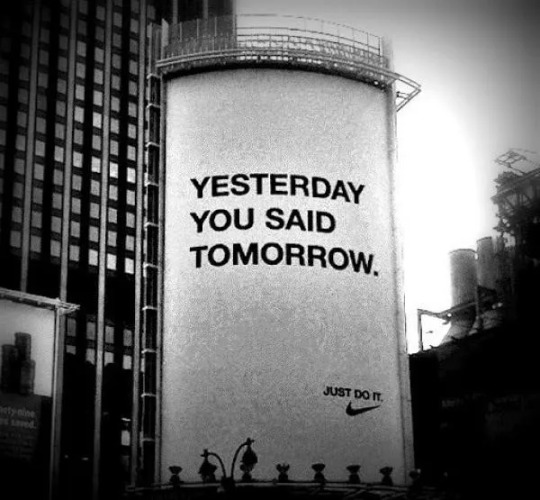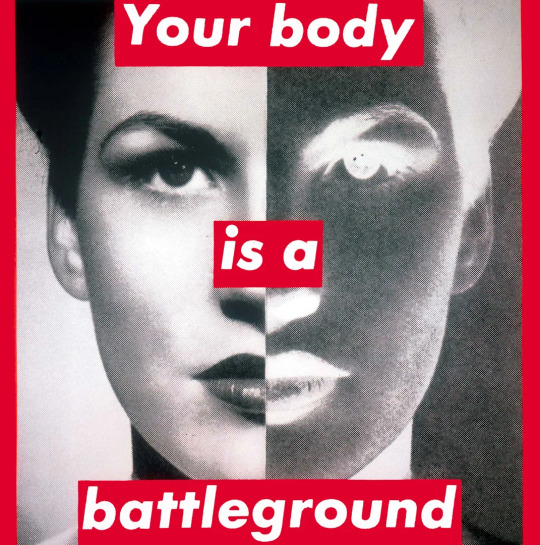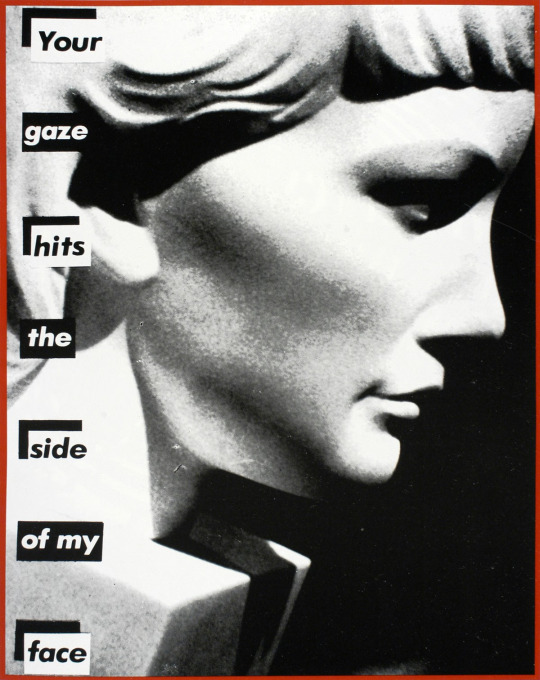#PowerAndIdentity
Explore tagged Tumblr posts
Text
WOII: Week 4 - Semiotics
Today's session explored semiotics, examining how signs and symbols communicate deeper meanings. Semiotics plays a vital role in design by ensuring visuals don't just represent but also evoke specific emotions and responses from the audience (Chandler 78).
For my personal analysis, I selected a Nike ad with a simple white background and the tagline, "Yesterday you said tomorrow." The typography in this design is central to its message. The use of bold, clean type creates emphasis, drawing attention to the urgency of the words. The scale of the type suggests importance and motivates action, reinforcing Nike’s call to stop procrastinating and take immediate steps toward improvement.
The design's simplicity, with minimal elements, focuses on clarity and directness. The white background creates a sense of space and calm, allowing the message to dominate without distraction. The type itself, likely in a strong sans-serif font, communicates a sense of strength, confidence, and modernity, aligning with Nike’s brand values of empowerment and self-improvement.
The message, "Yesterday you said tomorrow," functions as an indexical sign, referring to the idea of procrastination. It speaks to a broad audience, particularly individuals who value productivity and self-discipline. However, it could also exclude audiences who view such ideals as overly commercial or stressful, instead preferring a more balanced, relaxed approach to personal growth.
This ad exemplifies how design principles like emphasis, scale, and space work together to create a meaningful message, demonstrating the importance of semiotics in visual communication.
Word Count: 254 Words

--------------------------------------------------------------
Works Cited
Barthes, Roland. Image-Music-Text. Translated by Stephen Heath, Fontana Press, 1977.
Chandler, Daniel. Semiotics: The Basics. Routledge, 2002. Eco, Umberto. A Theory of Semiotics. Indiana University Press, 1976.
--------------------------------------------------------------


"Your Body Is a Battleground" (1989)

"I Shop Therefore I Am" (1987)

"Your Gaze Hits the Side of My Face" (1981)
#BarbaraKruger#SemioticsInArt#VisualCommunication#CulturalCritique#GenderPolitics#PowerAndIdentity#ConsumerCulture#SocialNorms#RepresentationMatters#FeministArt#CulturalSignifiers#ContemporaryArt#ArtAndSociety#VisualMetaphor#IdentityAndConsumerism#TextAndImage#ArtOfProtest#CulturalSymbols#VisualPower#SocialCommentary#ArtAsActivism#Materialism#TheMaleGaze#BodyPolitics#ArtAndPolitics#VisualIdentity#SymbolicMeaning#DesignAndSemiotics#ArtTheory#CriticalDesign
0 notes